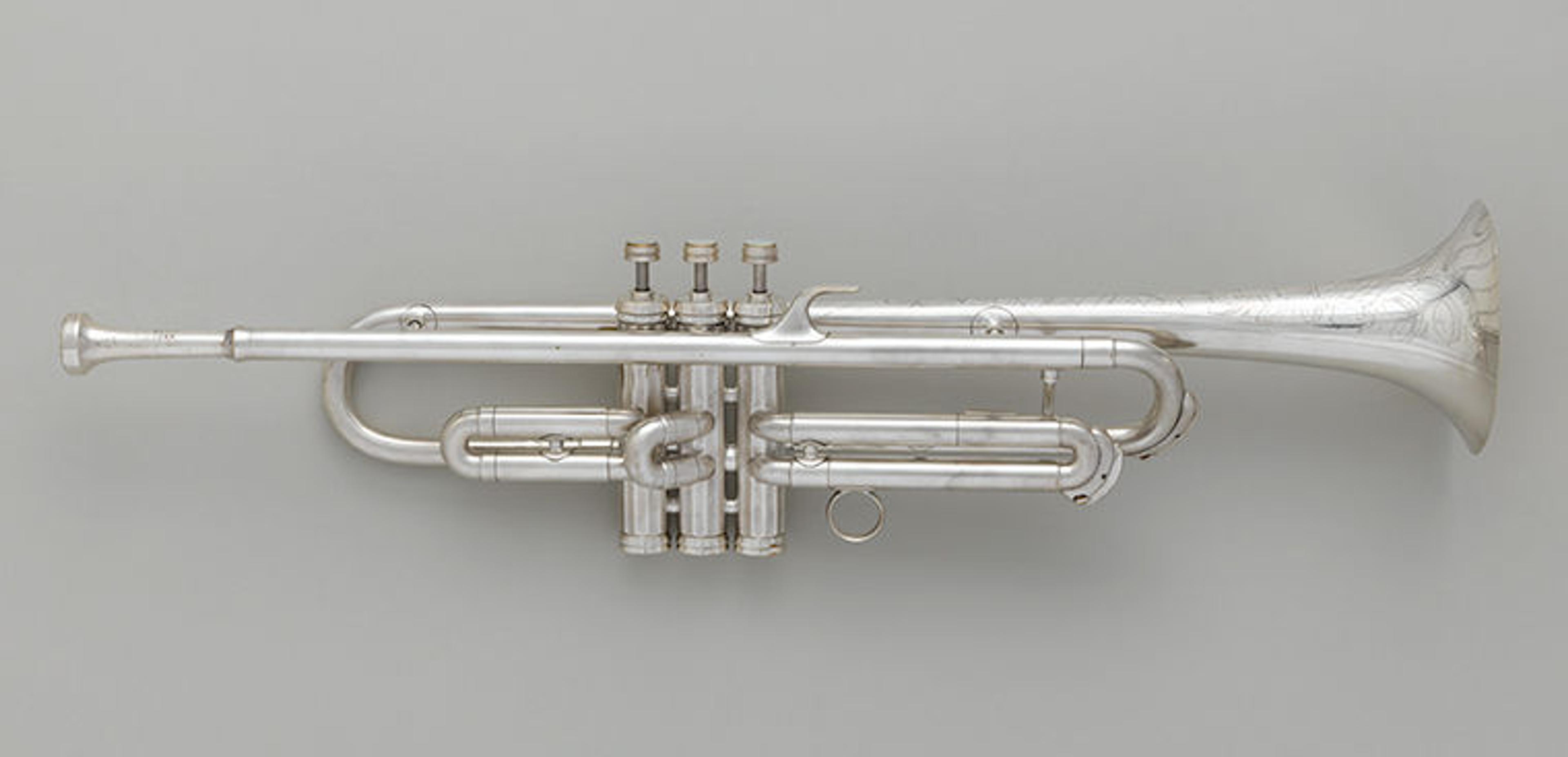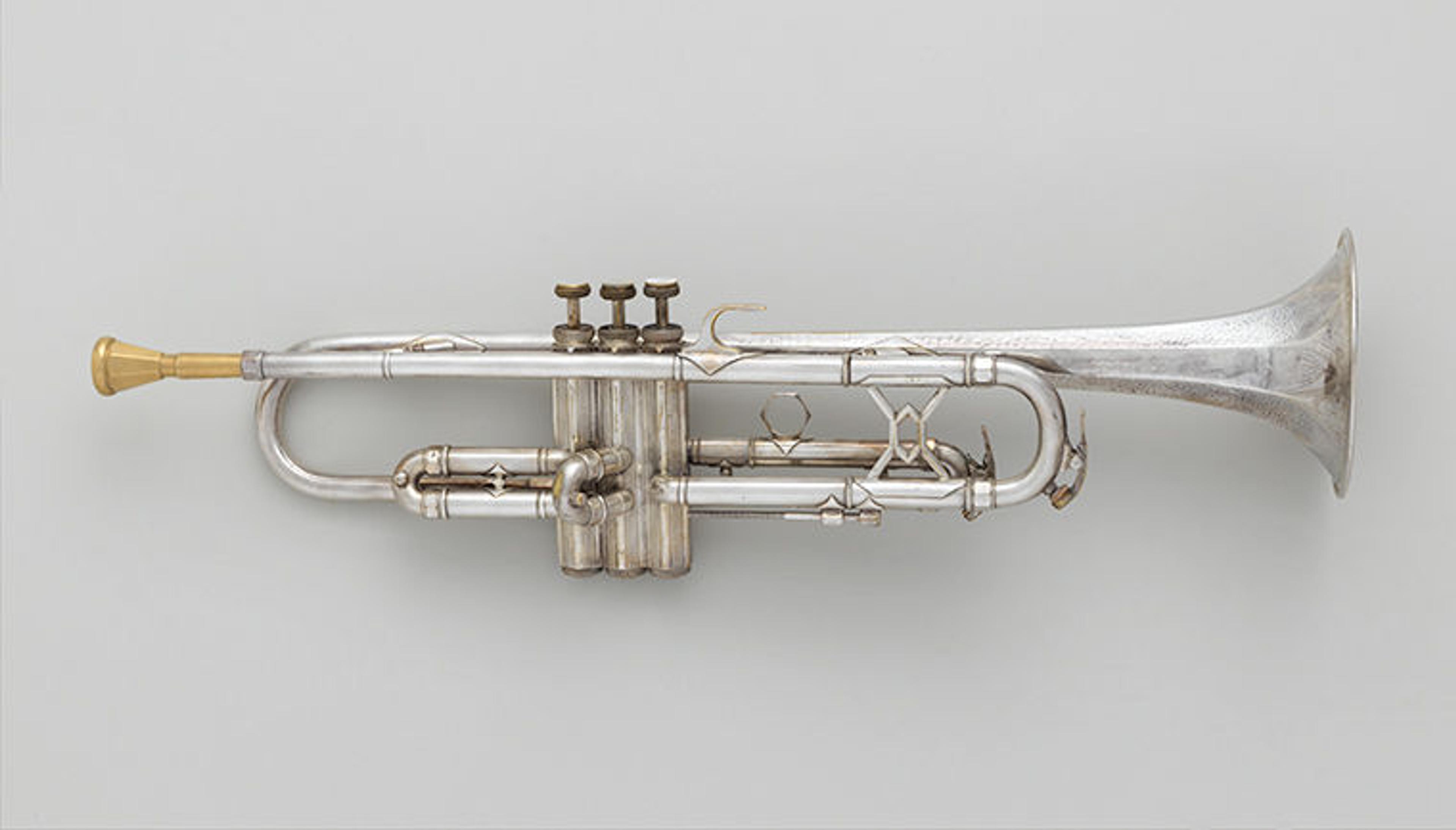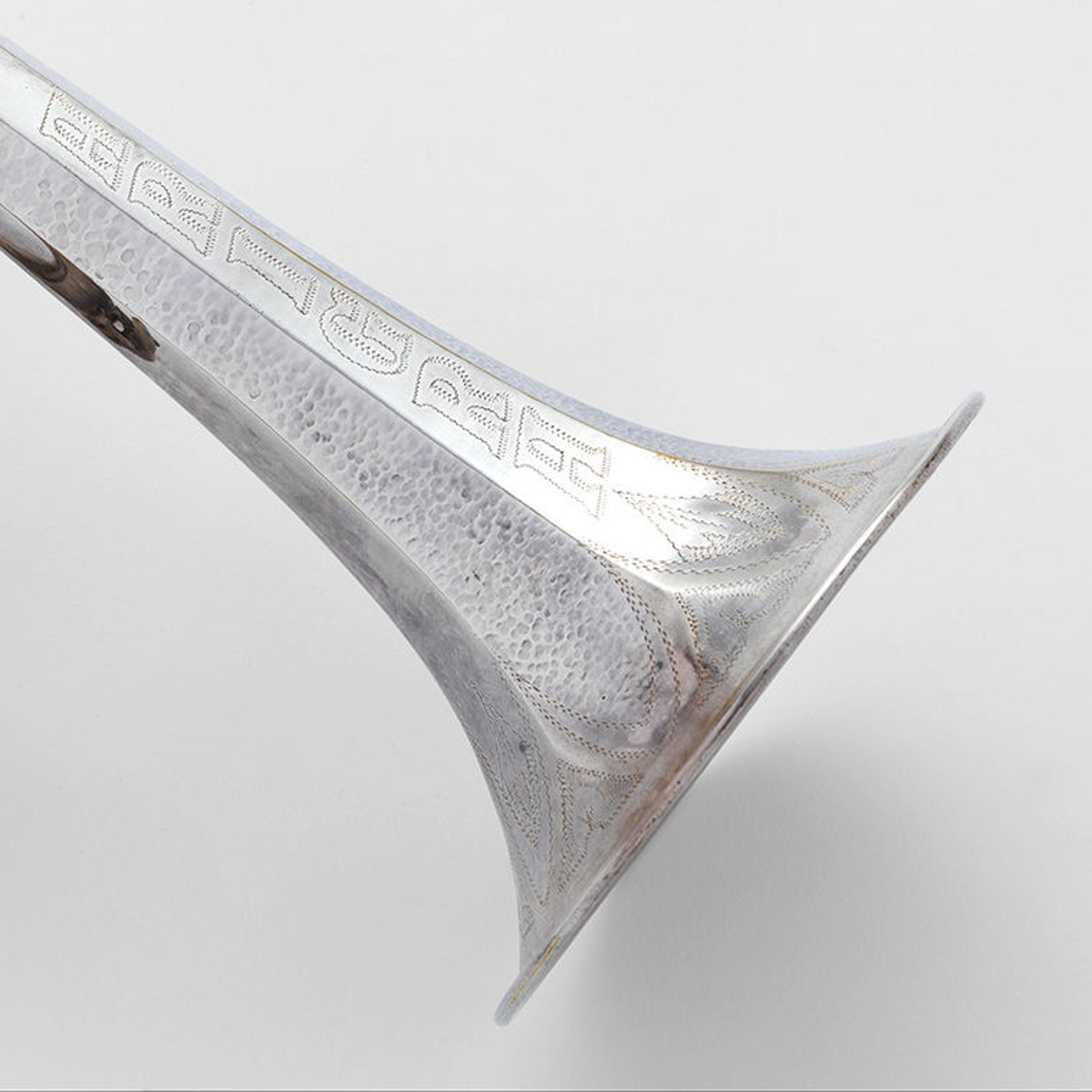From Jayson Kerr Dobney, Frederick P. Rose Curator in Charge of the Department of Musical Instruments:
In 2012, the Department of Musical Instruments at The Met established a partnership with the National YoungArts Foundation, an organization that nurtures emerging musicians. In this Collection Insights series, we present blogs written by six YoungArts alumni with short clips from concerts they presented on our Patrons Lounge series.
The Met's Patrons Lounge Concerts are made possible by The Dorothy Strelsin Foundation.
It has often been said that one's instrument is merely a vehicle for one's true voice to be heard. If that's the case, then the two trumpets I had the pleasure of playing from The Met collection can only be described as luxury vehicles! The craftsmanship and attention to detail on these horns are noticeable at first glance and only become more impressive as you look more closely.

Conn Musical Instrument Co., Elkhart, Indiana. Trumpet in B-flat, ca. 1934. Brass, silver plate, mother-of-pearl, 5 7/8 x 23 1/4 x 4 3/4 in. (15 x 59 x 12 cm). The Metropolitan Museum of Art, New York, Gift of Myra Strauchen and Bradley Strauchen-Scherer, in memory of Edmund Strauchen, 2016 (2016.720.2)
What makes Louis Armstrong one of the most beloved and recognizable figures in the history of jazz is the spirit and joy that rings out from his soul and, by extension, his horn. From the most learned jazz aficionado to the layperson without any notion of the sophisticated harmony or rhythms that "Pops" was playing, all were touched by the warmth that Armstrong was able to effortlessly convey through his horn. His genius was that he made such modern, virtuosic playing so accessible to people from all walks of life.
All musicians need great tools to bring their art to life, and these horns live up to the task and then some. Despite their age, their condition is pristine, and that speaks to the quality of the artisan's work in building instruments that would last. Armstrong, himself, would have found these horns worthy allies capable of capturing delicate subtleties and colors, from loud and barking to tender and whispering.

Anton Riedl (Czech, 20th century). Trumpet in B-flat, ca. 1930. Brass, silver plate, mother-of-pearl, 5 7/8 x 21 5/8 x 4 3/4 in. (15 x 55 x 12 cm). The Metropolitan Museum of Art, New York, Gift of Myra Strauchen and Bradley Strauchen-Scherer, in memory of Edmund Strauchen, 2016 (2016.720.1)
Over the years, the emphasis on trumpet-making trends has come to be placed on girth, weight, and size. (I challenge anyone to pick up Wynton Marsalis's custom-made Monette trumpet with one hand!) Studies have shown that heavier equipment can cut down on the amount of energy lost when a horn vibrates or buzzes as it is being called to action. There may be some truth to that science, and call me a moldy fig, but I believe these two handmade horns encapsulate the original intention and spirit of the trumpet more than any modern factory-made instrument! Let us not forget that the trumpet was originally intended for the battlefield, and to soar over the din of cannons and gunfire—these instruments are intrinsically bright and clear.
From the first few notes I played, I could tell how lively these horns are. Lightweight, with small bells, the sound seems to jump out of the bell like lightning; it doesn't take nearly as much work as modern horns to light up the room. I used this concert opportunity as a chance to dive into Armstrong’s classic repertoire. The universe felt aligned as I sang and played tunes like "A Kiss to Build a Dream On," "Sweet Georgia Brown," and Fats Waller's iconic "Ain’t Misbehavin'" on horns that would have played these songs in the days when they were born. There was a buzz in the air that evening, and it may have just been these magical horns speaking yet again.
As technology continues to put hard-working hands out of business, these trumpets remind us of the beauty in the imperfection of handcrafted work. The engravings on the horns are like initials carved into a tree—not the cold, callous imprint of a factory-stamped serial number. It was an absolute joy not just to play these trumpets, but to experience them, and have them play me as well!
Detail view of the bell of the Arigra trumpet (2016.720.1)
YoungArts artist Benny Benack III plays "I Surrender Dear" by Harry Barris (1905–1962) on The Met's Arigra trumpet. Also featured are Alex Claffy, bass, and Chris Pattishall, piano. Recorded live on December 8, 2017.
The Department of Musical Instruments at The Met devoted their entire 2017–18 season of Concerts for Patrons to performances by six YoungArts prizewinners, all of whom performed on historic instruments from The Met collection. The musicians were then asked to write about their experiences. See the full series here.
